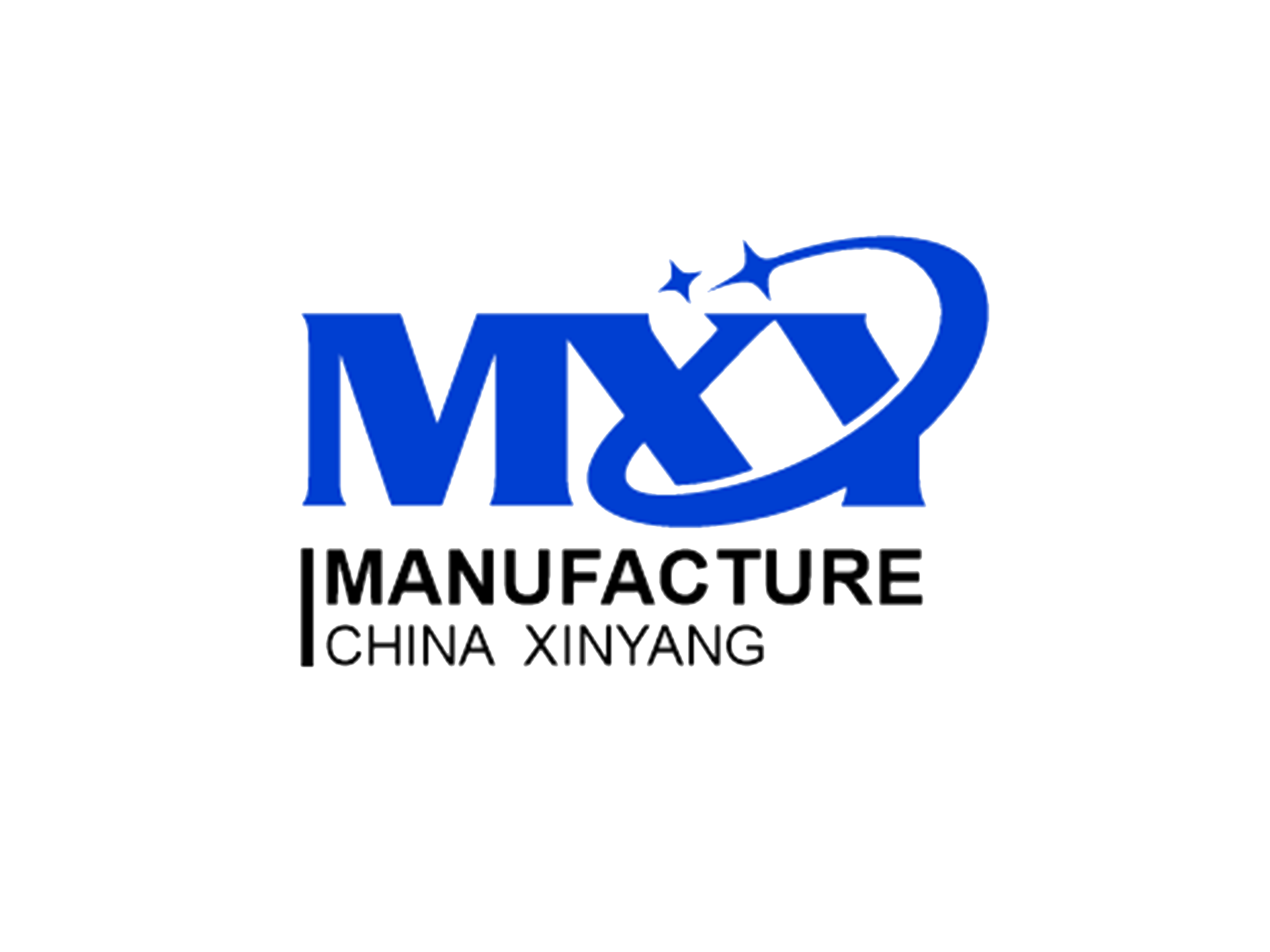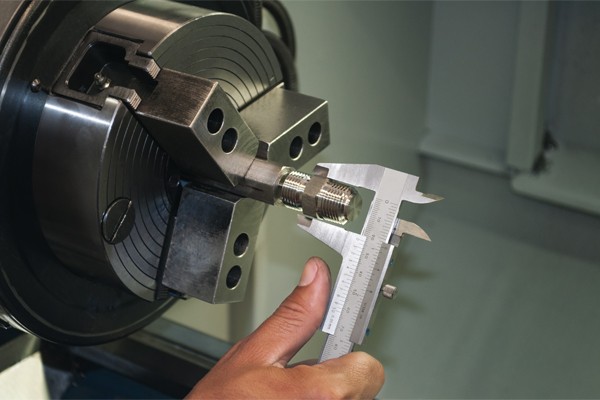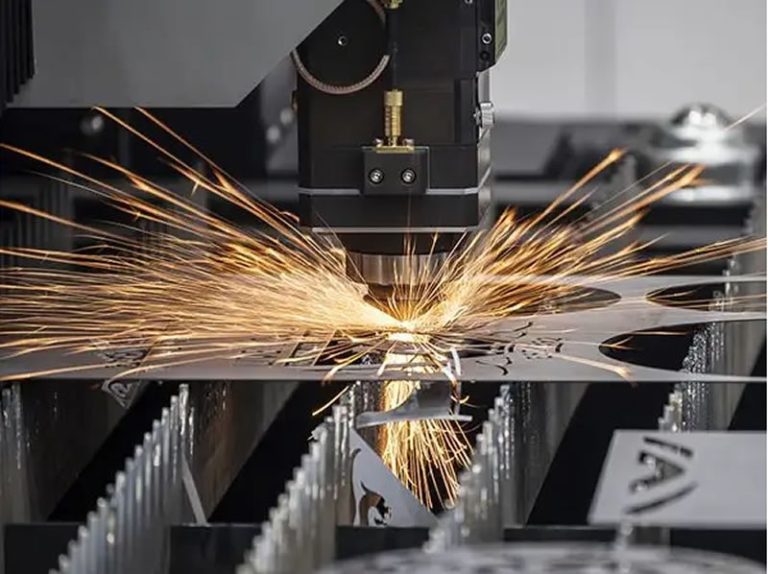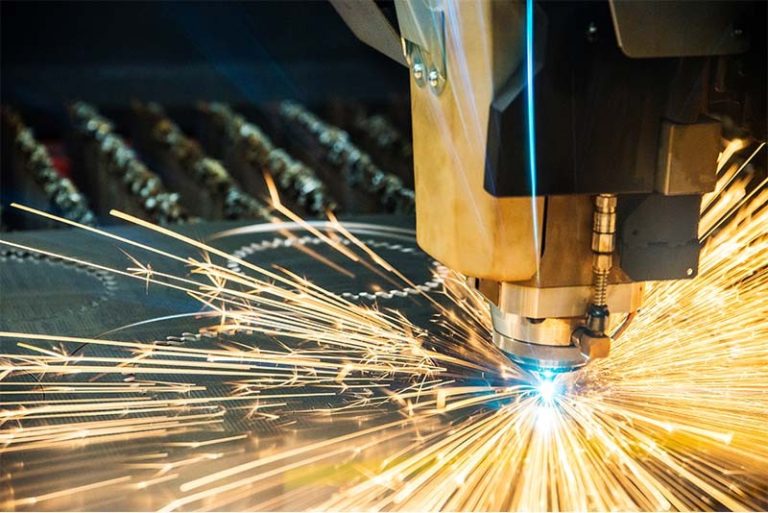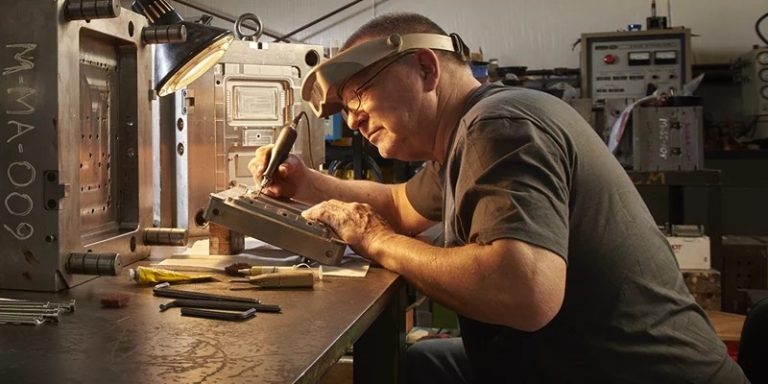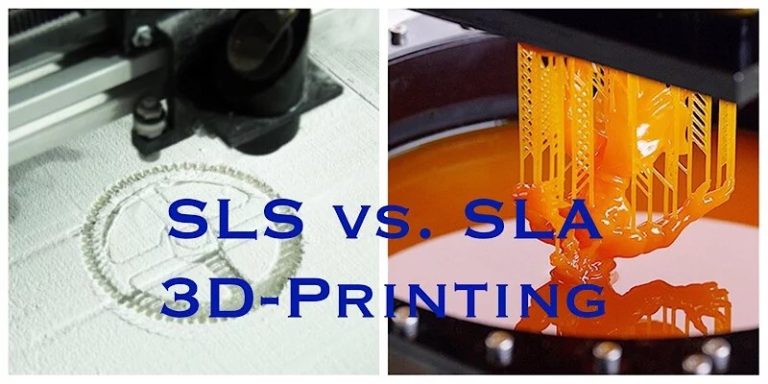Table of Contents
What is Precision CNC Machining?

Precision CNC machining is all about using computer-controlled machines to craft intricate parts with high accuracy and tight tolerances. By manipulating software programs to direct machine tools, including speed, direction, and depth, CNC machining can create consistent and precise parts through various processes like drilling, milling, and turning. This method is adaptable, working with a range of materials like metal, plastic, and wood, and is frequently utilized in industries such as aerospace, automotive, medical, and electronics to produce top-notch components with exacting finishes.
CNC Machining Process
1.Design CAD Model
Design engineers rely on a range of software options like AutoCAD, SolidWorks, Rhinoceros 3D, 3ds Max, Pro-E, UG, and Catia to develop 2D and 3D models. They can easily convert 2D designs into 3D models to meet specific product specifications. Engineers focus on improving CAD models to emphasize crucial part features such as tolerances, construction lines, threads, and other relevant parameters. This helps operators to better understand how to machine the parts efficiently.
2. Formatting for CNC compatibility
CNC machines are unable to read CAD models directly. To ensure the machine can understand the design, you must convert the CAD model into a file that is compatible with CNC. You can use online software providers or CAM programs like AutoCAD or Fusion 360 for this purpose. These programs can convert the data into a format that the CNC machine can process, and they provide various parameters such as rotational and linear movement, cutting order, toolpath, workpiece, machine speed, and more.
3. Set Up Parameter on CNC Machine
Once the CAM format designs are finished, the next step is to get the machine ready for production. The operator carefully places the workpiece on the machine to ensure the machine tool works efficiently. Depending on the workpiece’s materials and design, the operator picks the right machining tools to accurately cut the workpiece. Moreover, the operator adjusts the clamps as needed to improve the machining process, like adjusting the coolant levels.
4. Start to Machine the Part
Once the operator has attached the necessary cutting tools, the process will begin. The automated process will run until the computer program confirms that it is finished. Different levels of inspection are carried out during or after the machining process to ensure the creation of top-notch components.

Advantages of CNC Machining
High Accuracy
Precision machining can achieve very precise measurements and tight tolerances. It ensures that the components will function optimally in the next steps. So, achieving exceptional accuracy is crucial for the smooth operation of these specific parts.
Tight Tolerances
CNC precision machining is well-known for being the top choice when it comes to achieving accurate tolerances. Dimensional accuracy, or tolerance, is crucial in ensuring that machined parts closely match their CAD designs with very little deviation. Through the use of specific cutting tools and methods, CNC precision machining can greatly minimize these tolerances, producing parts that closely follow the initial blueprints.
Consistency
CNC machines are highly automated and operate based on pre-programmed instructions, ensuring the creation of components that are consistent in size, shape, and quality. This feature is particularly crucial in industries where precision and reliability are crucial factors for sustained productivity.
low production cost
CNC machining ensures accurate parts, resulting in fewer defects and less waste. Automation also cuts down on labor costs, while the technology itself reduces material expenses. As a result, CNC machining proves to be a cost-effective option compared to other alternatives.
versatility
CNC machining is incredibly versatile, allowing it to work with many different materials and perform a variety of operations. Here are some examples that showcase its flexibility.
With CNC machines, manufacturers can work with a diverse selection of materials, ranging from metals such as aluminum, steel, and titanium, to plastics like ABS, PVC, and polycarbonate, and even wood. This broad range of material options enables the production of parts tailored to different industry requirements.
CNC machines are equipped with a wide range of capabilities, allowing them to carry out various operations such as milling, drilling, turning, grinding, and more. With the help of CNC milling machines, intricate shapes and contours can be easily created in metal components, while CNC lathes can accurately transform cylindrical materials into perfectly dimensioned shafts.
CNC machining is a versatile option for prototyping, allowing manufacturers to create parts in small or large quantities. This process enables them to test and perfect their designs with a small batch of components before moving on to mass production.
Types of CNC Machining Operations
CNC machining plays a crucial role in the manufacturing of parts, as it uses a subtractive method to shape the desired product by removing material from a workpiece. Various common CNC machining operations are employed to accomplish this goal.

CNC Turning
CNC Turning involves the rotation of a workpiece while a cutting tool removes material by moving along its length. The cutting tool is fixed on a carriage that can move along the X and Z axes, allowing it to traverse the length of the workpiece. A tool holder secures the cutting tool in place and can be adjusted to change its position and angle. This method is commonly used to create cylindrical parts with various features like grooves, threads, holes, and tapers. Cutting tools are typically made of high-speed steel, carbide, or diamond, depending on the material being machined and the desired finish. By precisely removing material as it moves along the part, the cutting tool shapes the workpiece according to the desired design.
CNC Milling
CNC milling and CNC turning are two distinct methods of rotary machining. While turning relies on the rotation of the workpiece, milling relies on the rotation of the milling cutter. Traditional milling involves two modes of relative motion. In the first mode, the workpiece is secured while the milling cutter rotates and translates. The second mode involves the milling cutter rotating while the workpiece moves in three directions: forward and backward, left and right, and up and down.


CNC Drilling
CNC drilling involves using rotating cutting tools to create circular openings in a stationary workpiece. It is often used for decorative purposes or to make space for screws and bolts. This technique is similar to routers or mills and can be combined with other methods for shaping materials.
Multi Axis CNC Machining
Multi-axis CNC machining is a type of CNC machining that uses computer-controlled machines to create complex shapes and geometries. Unlike traditional CNC machining, which is limited to the X, Y, and Z axes, multi-axis CNC machines can move along multiple axes, allowing for the production of intricate parts with intricate shapes.
4-Axis Machining
1.4-axis machining, a form of CNC machining, includes an extra axis of rotation known as the A-axis. This additional axis allows the cutting tool to move around the workpiece, making it ideal for creating components with angled holes and complex features. The versatility and capability of 4-axis machining are showcased through the production of various parts.
- With the help of 4-axis machining, it becomes possible to create components that have slanted apertures. This technique is particularly useful for manufacturing turbine blades and different aerospace parts. By tilting the cutting tool using the A-axis, precise angles can be achieved while machining the apertures.
- Curved parts: Four-axis machining is perfect for producing parts with curved surfaces, like impellers and propellers. The A-axis allows the tool to move around the part, allowing for the creation of complex shapes and curves.
- Components featuring indentations: Utilizing 4-axis machining enables the production of components with indentations, such as those seen in molds. The A-axis permits the cutting tool to access the component from different angles, enabling the machining of intricate features that may be difficult or impossible to create with traditional machining methods.
- Components with angular features can be created using 4-axis machining. This process allows for the fabrication of chamfers and bevels with precision by enabling the cutting tool to approach the component at an angle using the A-axis.
5-Axis Machining
5-axis machining involves adding two additional axes of rotation, referred to as the A and B axes. This allows the cutting tool to move in multiple directions, increasing flexibility and versatility compared to 3- and 4-axis machining. This feature is particularly useful for creating complex shapes and contours.
- Aerospace parts: By using 5-axis machining, aerospace components like turbine blades, engine parts, and landing gear components can be produced with precision and accuracy. The additional axes in the manufacturing process make it possible to create intricate shapes and features.
- Medical devices such as hip and knee replacements can be produced using 5-axis machining, allowing for the creation of complex shapes that match the patient’s anatomy.
- 5-axis machining is an essential tool in the manufacturing of molds and mold components. It allows for the creation of complex features like undercuts, cavities, cores, and inserts. These intricate details are crucial in producing high-quality molds and dies.
- Auto parts are manufactured using five-axis machining, which is crucial for producing engine blocks, cylinder heads, and transmission parts. The additional axes enable the production of intricate shapes and features necessary for high-performance automotive applications.

ALuminum

Copper

Brass

Stainless Steel

Titanium
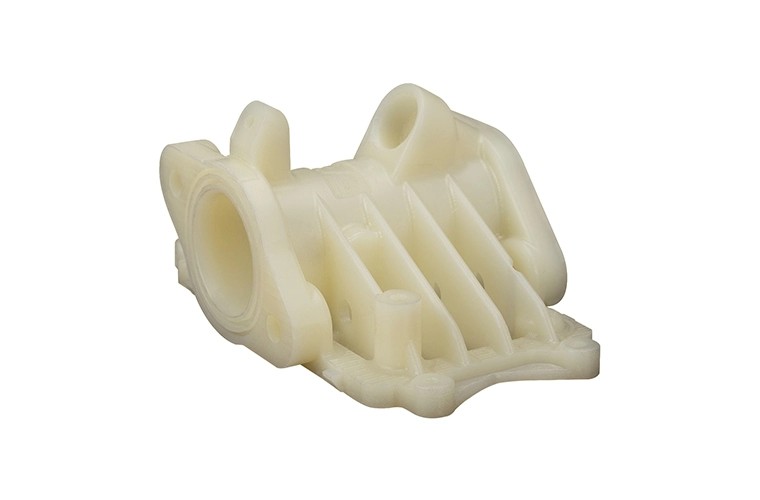
Plastics
Application of CNC Machining
Application in the Automotive Industry
CNC machining is essential in the automotive industry as it helps create high-quality parts and components that enhance performance. This advanced technology is key in meeting the demanding standards of today’s automotive market.
Motor Elements: Engine elements that require high precision are often found in CNC machining, like cylinder heads, intake manifolds, and engine blocks. These elements have intricate designs and need strict tolerances to ensure optimal performance. CNC machining makes it possible to produce uniform and precise parts.
Transmission parts like gears, shafts, and housings need to be precise and durable. CNC machining can create complex shapes and features to meet these needs.
The Importance of Suspension Components: Excellent handling and stability rely on suspension parts that exhibit both strength and stiffness. To achieve this, utilizing CNC machining has proven to be an effective method, enabling the creation of lightweight and high-performance designs. For instance:
Control arms are essential components of a car’s suspension system as they connect the suspension to the frame of the vehicle. By using CNC machining, control arms can be manufactured with high precision and consistency, ensuring they fit correctly and work effectively.
Steering knuckles are essential for connecting steering components to the wheel hub in a vehicle’s suspension system. CNC machining ensures precise geometry and tolerances, making them durable under the steering system’s strains.
Sway bars, also known as anti-roll bars, are used to reduce body roll when turning, which improves the vehicle’s handling and stability. By utilizing CNC machining, sway bars can be manufactured with precise measurements and stiffness properties, ensuring they can provide the desired level of performance.
Application in the Medical Industry
CNC machining plays a vital role in the medical industry as it guarantees precise and accurate production of medical equipment and tools. Let’s explore a few examples of how CNC machining is utilized in the medical field:
CNC machining is widely used in the manufacturing of various medical implants, including dental, orthopedic, cranial, and spinal implants. The production process of these implants requires a high level of precision and biocompatibility to ensure they fit perfectly and function optimally in the human body.
Surgical tools like forceps, scissors, and clamps are commonly made using CNC machining for accuracy and strength needed in surgeries.
CNC machining ensures the production of accurate and consistent components for medical devices like pumps, valves, diagnostic equipment, and imaging machines. This technology enables the manufacturing of these devices with utmost precision.
CNC machining plays a crucial role in manufacturing prosthetics such as artificial limbs and joints. These prosthetics require precise accuracy and biocompatibility to ensure they fit perfectly and function effectively within the human body.
Application in the Robotic Industry
CNC machining plays a crucial role in the robotic industry by enabling manufacturers to create top-notch robot components and systems with accuracy and reliability.
Robot parts need to be precise and durable to ensure excellent performance and reliability. These parts consist of gears, bearings, shafts, housings, and frames.
End effectors are attached to the end of a robot arm to interact with the environment. They are made using CNC machining to ensure precise geometry and functionality, allowing them to grip, manipulate, and move objects with great accuracy.
Precision and reliability are crucial for the efficient control of robots, and control systems need to adhere to these standards. CNC machining is used to produce the different parts and casings required for robotic control systems, including sensors, actuators, and controllers.
Prototyping: CNC machining plays a crucial role in the prototyping phase of robotic development. Designers and engineers can make use of CNC machines to effectively produce prototypes of robot parts and evaluate their compatibility, design, and performance before proceeding with mass production.
Conclusion
The use of precision CNC machining brings numerous benefits when it comes to creating intricate and precise parts. This modern technique outshines traditional machining methods in terms of flexibility, production speed, and accuracy. Different types of CNC machining, such as 3-axis, 4-axis, 5-axis, and multi-axis machining, offer distinct advantages and capabilities. By gaining a comprehensive understanding of the definition, process, advantages, and types of CNC machining, businesses can make informed decisions about the most suitable technology for their specific manufacturing needs. In essence, precision CNC machining plays a vital role across industries by delivering the precision, accuracy, and efficiency required to manufacture top-quality parts and products.MXY is dedicated to excellence in CNC precision machining services. Our modern CNC machining centers, which feature 3-axis, 4-axis, and 5-axis machines, allow us to create tailor-made parts that precisely meet the specific requirements of our clients. With our skilled engineering team and thorough quality inspection department, we are committed to providing top-quality parts at competitive prices.
